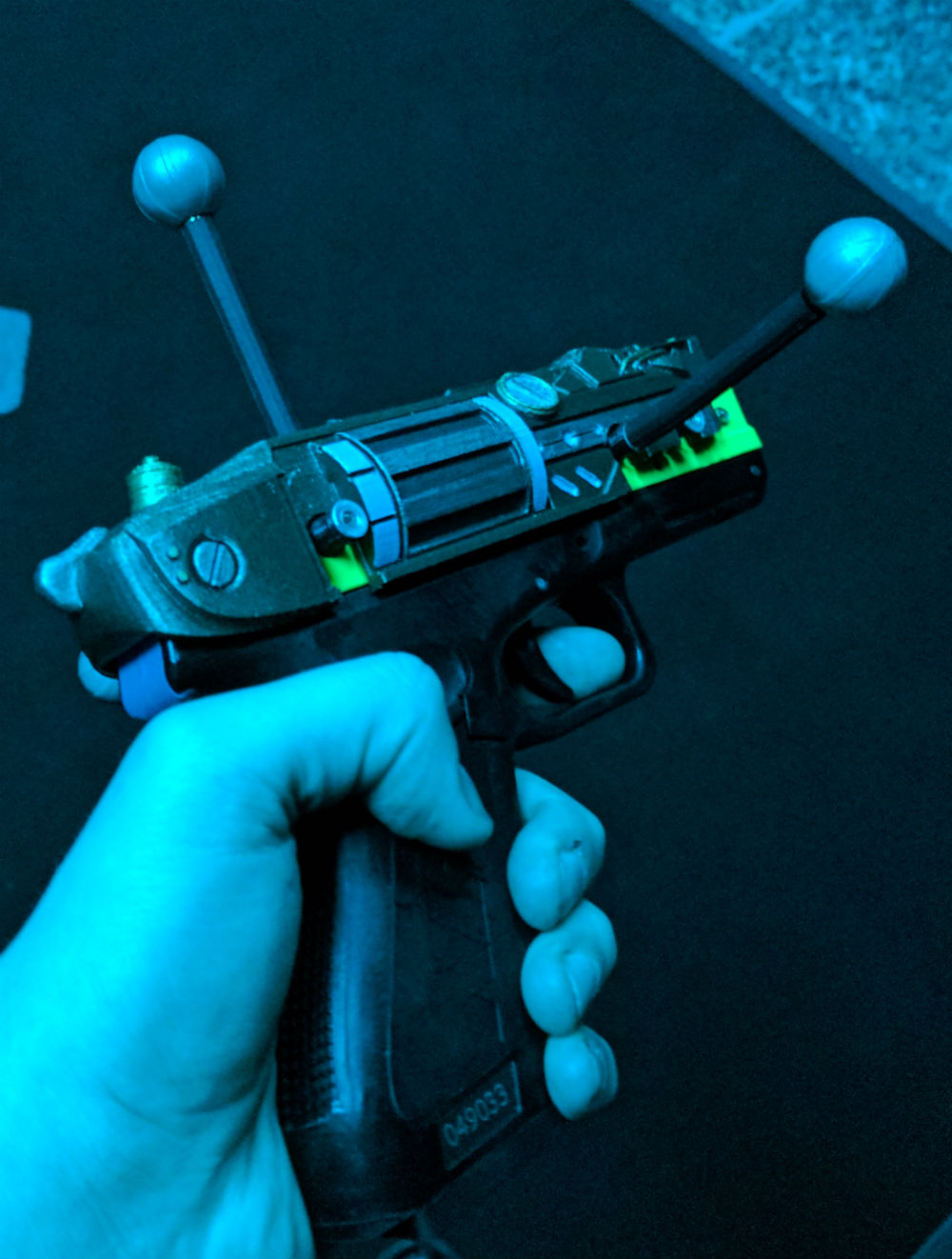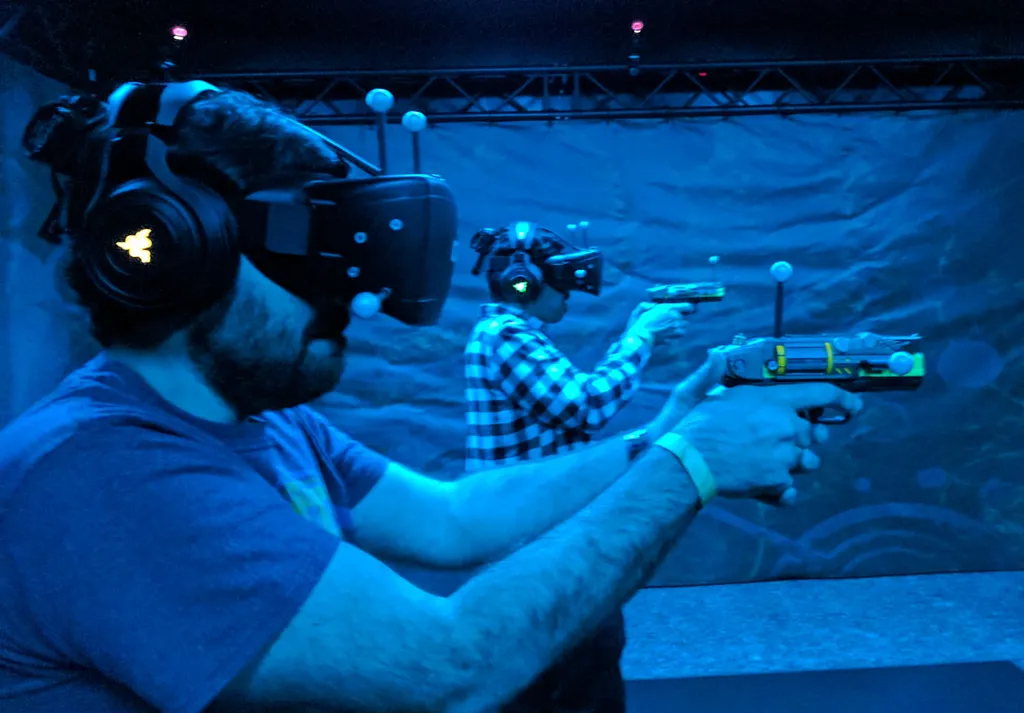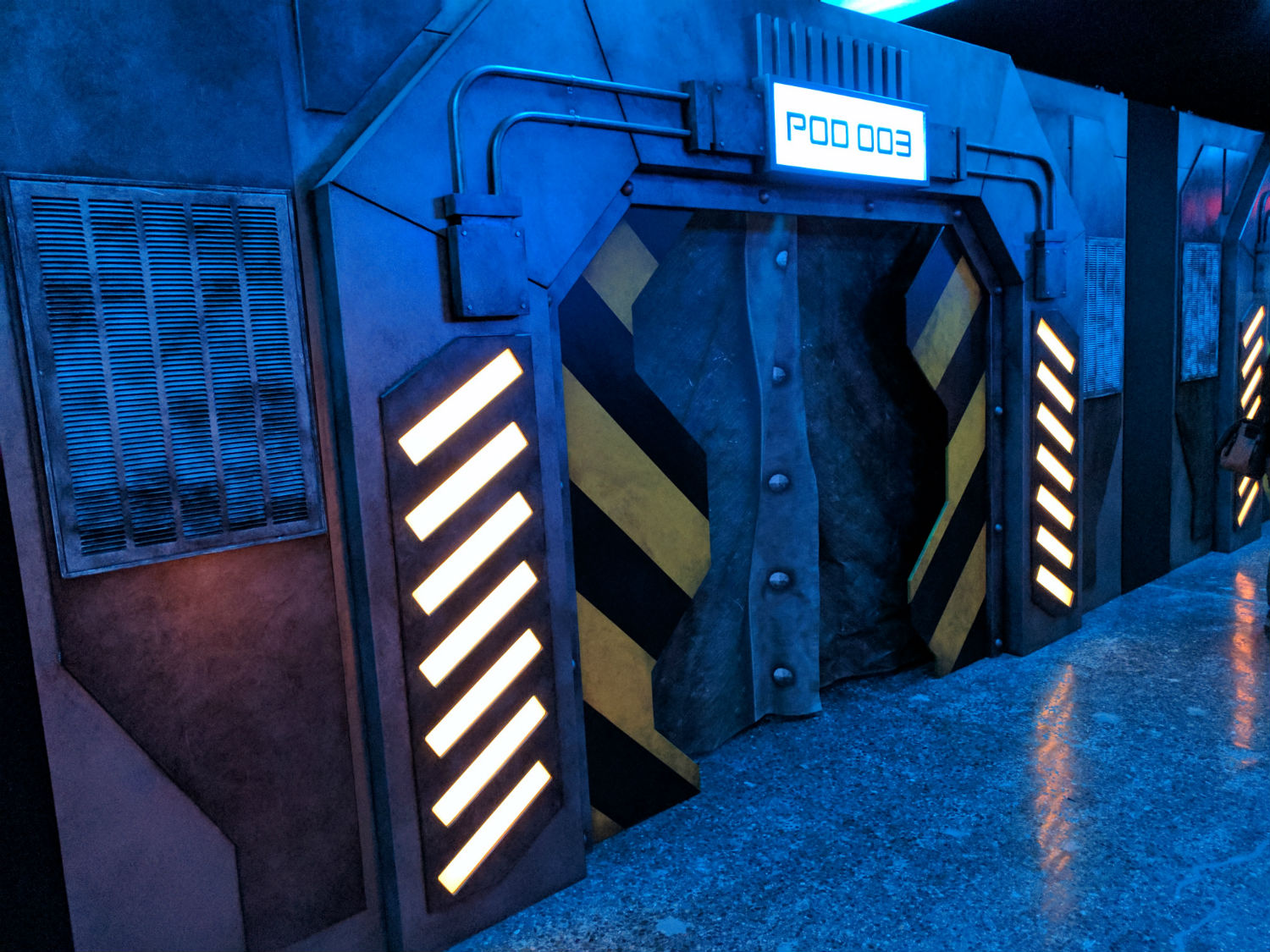Knott’s Berry Farm in Orange County, California is said to be America’s oldest theme park. The Knott family started it as a literal farm but built it up into a restaurant and then opened up a ghost town in the 1940s for entertainment that served as the basis for a decades-long expansion into a 160-acre park in the heart of Southern California. If you’re unfamiliar with it, you’ve undoubtedly heard of its neighbor Disneyland just a short drive away.
On April 1, Knott’s is opening an expansion to its arcade paying homage to that original ghost town while updating it for the 21st century. VR Showdown In Ghost Town is a multiplayer VR experience that costs $6 in addition to the cost of your ticket. We gave it a try at a media preview this week.
Visiting Showdown In Ghost Town
Whether playing on your own and aiming for a high score or back to back with a friend or family member, the experience is a quick three minute battle that puts you in the middle of an old west town trying to stop time traveling robots.
The headset is completely wireless and, unlike setups like The Void’s Ghostbusters, there’s no backpack you need to wear. There’s just a lightweight headset, toy gun and your best aim to help you as an Old West shooter. The Knott’s location includes eight separate rooms with up to two players per room — so the whole place can support a maximum capacity of 16 people playing at once. In the cooperative experience, two players in the same room share the same square mat that’s roughly 20 feet by 17 feet. Two rooms can be connected in VR though, so up to four players can battle the same robotic baddies together.
How It Feels
Showdown In Ghost Town is centered in the virtual city of Calico with different kinds of robots either firing at you from a distance or rushing your location. The world is built on existing lore from Knott’s Berry Farm including Professor Welles’ Time Machine and buildings seen in the physical Ghost Town. Some robots invading this town are human-sized, but others are evil little buggers that rush your feet. Given that you’re likely to crouch behind cover, these tiny machines can rush you at eye level and it is incredibly satisfying to blast them away.
The game more or less takes place in three phases, with these robot shootouts, an exploding train throwing debris at you and a final boss battle. When you get hit you lose points and at the end of the trip you see how you did compared to the other players.
Blue lines appear when you’ve reached the edge of the space to let you know not to go any further. When you’ve got the headset on and gun in your hand, you can see your friend’s head and gun in the virtual world so you don’t bump into each other. The world was custom-built by a small team over the course of about six months at Bellevue, Washington-based VRstudios. The custom headset is theirs as well and the installation at Knott’s represents the largest roll-out yet for the startup.
How It Works

The VRstudios headset works in tandem with overhead cameras made by Optitrack. These cameras track the headset’s location (as well as the gun) and a nearby computer draws the virtual world you’ll see. The computer beams the images of this world wirelessly to your headset and every second its display refreshes the view inside 60 times. These images are matched to your head’s location and appear so quickly they convince your brain that you’re perceiving a dusty virtual world. The refresh rate of this system, however, is significantly less than the 90 frames each second displayed inside the Oculus Rift and HTC Vive, which started shipping to buyers last year.
Bottom Line
This means there’s a fair amount of blur seen inside the world that would be noticeable to owners of those systems. Since most visitors to Knott’s are unlikely to be early VR adopters, though, I wonder if many would notice. I also noted thick black lines outside the display area in two different headsets that might be easily ignored if focusing on the virtual world and the quickly approaching robots. Since you are free to move around the room free of wires, backed up by a friend and quite active for three minutes — ducking behind cover or unloading bullets into the coming robots — I’d bet most visitors will simply find themselves highly engaged in a virtual world rather than noticing these technical details. I was surprised it was only a three-minute visit when I came out because it felt longer.
Knott’s representatives said the plan is to let guests load up the same card they use to pay for games in the arcade for multiple trips through this virtual world. Cedar Fair, which owns Knott’s and other theme parks, has installed VR coasters at other locations, but this represents the company’s first permanent installation of its kind.
With recent visits to the most newest Six Flags VR coaster, the new IMAX VR location in Los Angeles as well as the reveal of new cameras from Optitrack that can cut the cost of future installations like The Void by as much as 40 percent, we’re seeing a lot of momentum for location-based VR entertainment in the United States. Now we’ll wait and see which types of experiences people find compelling enough to pay for.


























